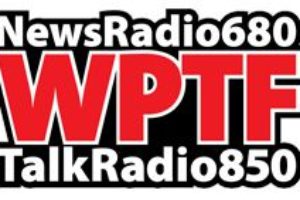Cracks in the financial system emerged in February 2007, credit markets seized up in August 2007, and the economy entered recession in December 2007. U.S. accounting rule makers, the Financial Accounting Standards Board, finally decided yesterday to join the effort to help stabilize our banks when they voted to ease “mark-to-market” rules. FASB is an independent standard setter, but Chairman Robert Herz received pressure from Congress to loosen the policy. This latest move in the evolving fight to stabilize the banks has more ammunition than any of the previous bailouts or rescue programs. The cost to taxpayers is nothing.
The toxic assets that are being held by our nation’s financial institutions are considered debt on their balance sheet, and traditionally debt has long-term intrinsic value. Accounting rules require these institutions to “mark” these assets to market value. Currently no market exists for the trading of these assets; however under “mark-to-market” accounting rules the banks are forced to write down the value of these assets conservatively. Of course, the assets have not been sold at these revalued prices, but instead reflect the price they “might” be able to demand.
The financial institutions are then pressured to raise more capital to protect against future losses on the devalued assets and meet regulatory capital requirements. The process has led to unnecessary alarm about the financial system’s stability. In fact, companies such as Bear Stearns and Lehman Brothers would still exist if these rules would have been altered in 2008. Massive losses at now government-owned entities such as AIG, Fannie Mae, and Freddie Mac are largely attributable to “mark-to-market” rules.
The primary change in the rules is related to how management defines an asset on the balance sheet. Under the old rules, an asset defined as “other than temporarily impaired” triggered a write-down in value that impacted earnings and may have caused reserve capital to fall below regulatory requirements. Management could avoid the classification by asserting the company had the intent and ability to retain the asset on the balance sheet until the valuation recovered.
The new rules will allow management to avoid the classification by stating they “intend to hold the asset and that it is more likely than not that they will”, which is a reduced standard. Furthermore, only losses related to the underlying creditworthiness would affect earnings and regulatory capital, losses attributed to market conditions would be disclosed elsewhere.
Changes to “mark-to-market” accounting rules are good for the banks, but not so good for investors. Allowing management to influence control over the valuation of assets will reduce transparency. In addition, banks might not feel incentivized to participate in the Treasury’s plan to purchase toxic assets using a mix of taxpayer money and private capital. Managers would no longer feel the pressure to force sell assets for a reduced price when they can hold them to maturity without impacting capital ratios. Easing “mark-to-market” could lead to efficient price discovery, but undoubtedly, the price will settle higher than when private investors expected banks to continue marking down the value of these assets.
Although, I argued the FASB should have altered these rules a year ago, the fact that Congress pressured the change in rules is most worrisome. One member of the FASB stated, “We are independent and it’s important that we maintain our independence.” The economic crisis in America has allowed the control of Congress to extend far outside the comfort zone of most citizens. Lawmakers should be careful not to politicize the crisis and use its effects to initiate a power grab over financial markets or companies. I do applaud Congress for pursuing a method to help our banks without redistributing money from the taxpayer. Americans from both political parties welcome pragmatic solutions to end the crisis, stabilize the economy, and prevent future disruptions.



